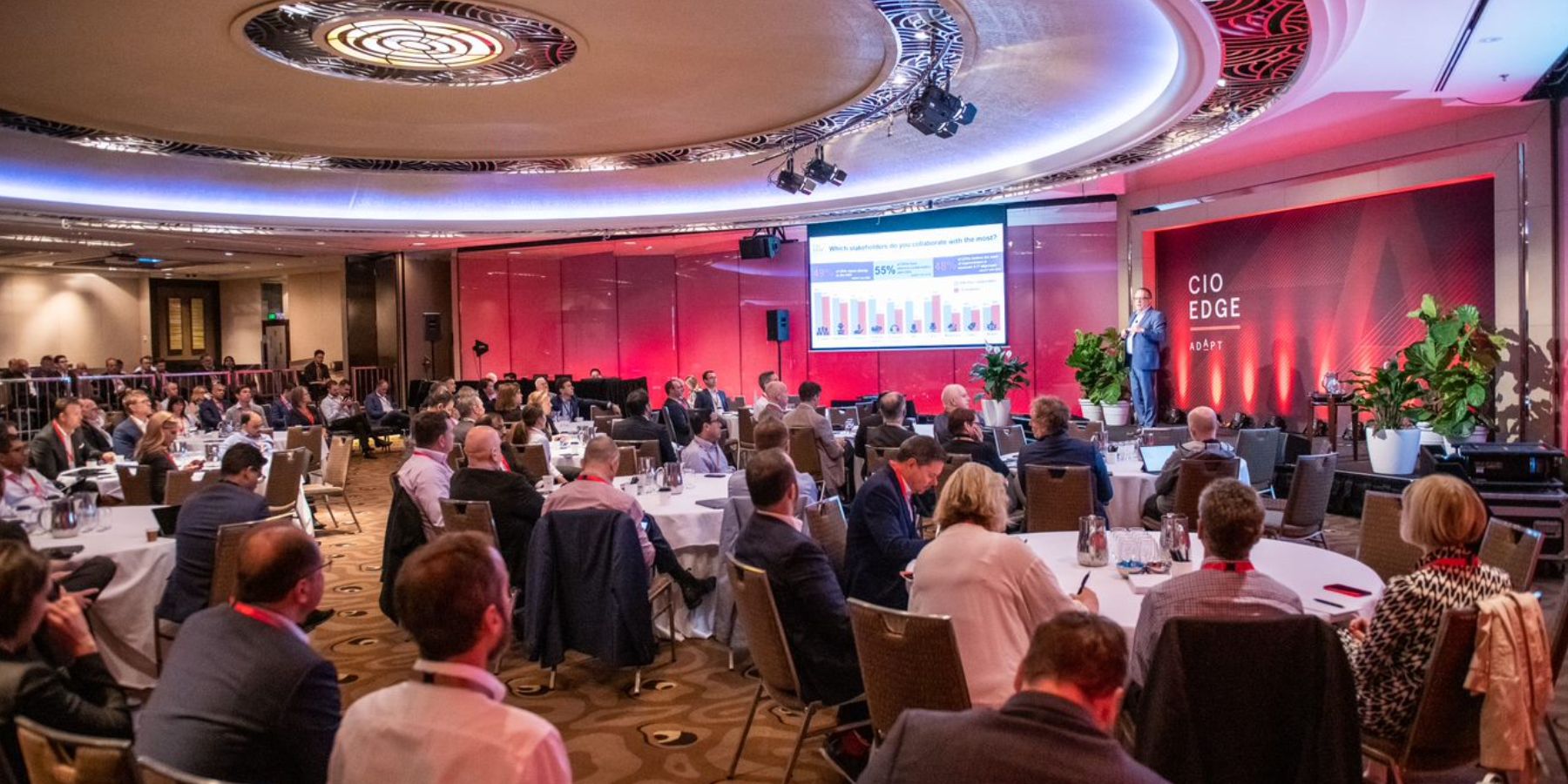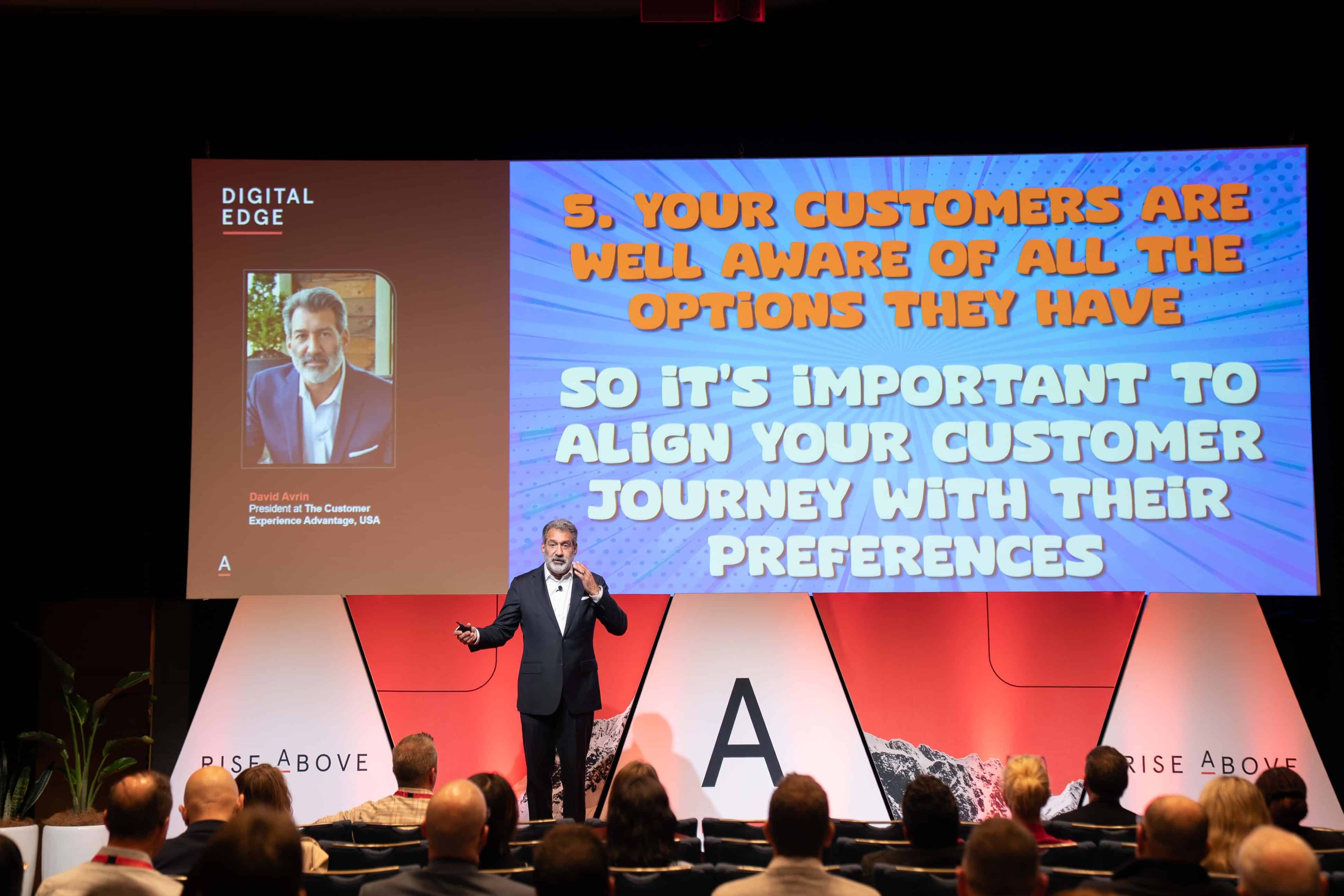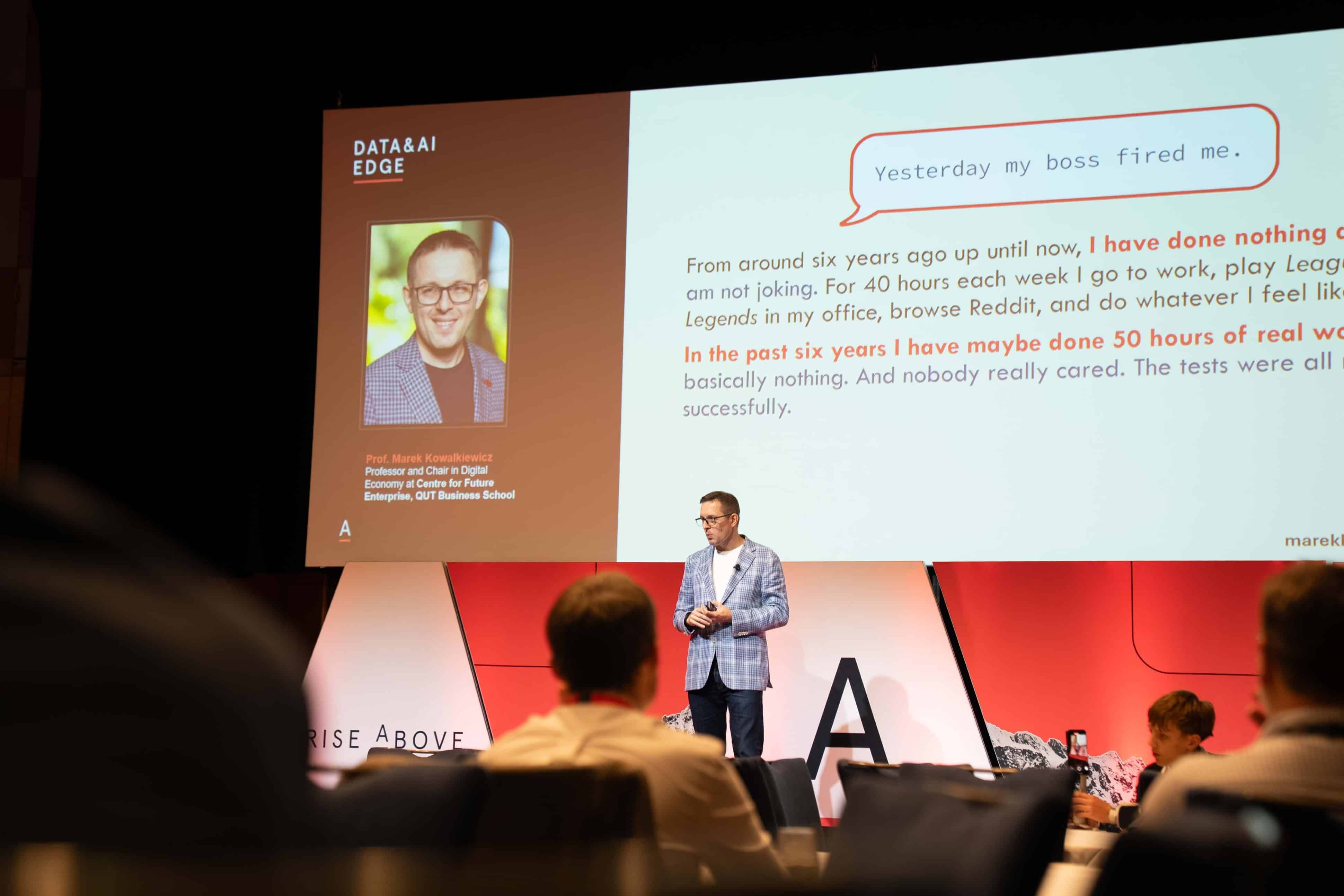At the 2022 CIO Edge event, ADAPT’s Director of Strategic Research, Matt Boon, gives an overview of the evolution from in-office to hybrid operations.
ADAPT forecasts that by 2023, 53% of employees will work from home, compared to 12% in the pre-COVID era.
With local CIOs’ top business priority as attracting and retaining talent, it is of great remiss that employee experience is not one of the top focuses or funding initiatives in the increased 2022 budgets.
If employers force employees to return to the office, they will experience attrition. To drive effective hybrid collaboration, leaders must overcome team bonding, digital fatigue, and idea-sharing issues.
ADAPT Research and Advisory clients can view the full presentation on the platform.
Transcript:
One thing that really stands out to me here is that we said that attracting and retaining talent was our number one business priority for the year ahead.
Where is employee experience? It’s not in the top five of our key focus areas for 2022 and beyond, which really stood out to me as a bit of a disconnect there in thinking.
So we recognise we need to attract and retain talent, we’re not necessarily investing as much as we should be in allowing us to achieve and deliver on that.
Moving on to the next slide, wanted to keep on that people angle and just give you some perspectives in terms of how we’ve seen this working-from-home momentum transpire over the last couple of years.
You can see back in 2019, 12% of you told us that employees were working from home at any given time, only 12%. What we see as we move through 2020 and indeed right through until pretty much today, over 70% of employees were working from home at any given time.
Now the interesting thing is when we look forward to 2023, you’re still expecting that over half of your employees will work from home at any given time. So, this concept of the hybrid workplace, the hybrid workforce is just what we do now. This is the future. At the end of the day, there’s no going back, I think, to those 12% numbers.
In fact, when we surveyed you on another question, we asked in terms of your expectations, when you think about how often people will come into the office five days a week. You told us only 2% of employees are working from the office five days a week.
It’s a massive shift if you think only 12 percent were working from home back in 2019. We’re now seeing only 2% are going to the office five days a week. That’s massive shift we’ve seen over the last two years will continue apace.
And at the end of the day, as we think about that, we need to make sure that we’re delivering the experiences our employees want within that. But something to think about as we consider this slide is that when we consider attracting and retaining talent, being a number one business priority, we all read in the press Company A, Company B is saying we’re going to bring people back to the office. We’re going to force our staff back to the office.
The challenge here is given the trust we built up with our employees and our workforces over the last two years, the fact they’ve delivered on what we had to deliver on, by and large. We’ve delivered the capabilities to get through the last two years in a remote world.
We start bringing them back, what’s going to happen?
They’re going to leave if that’s not what they want to do and find an employer who will allow them to work remotely.
Now the Catch 22 here is in this hybrid world, they’re still facing many frictions and many challenges, as we can see on the next slide. And as we consider this, what happens if we don’t really manage and overcome some of these employee frictions, they’re going to leave as well.
They’re going to leave if we bring them back to the office forcefully.
They’re going to leave if we let them work remotely but don’t deliver those equitable employee experiences they expect from us in this hybrid world as well.
These are the top five difficulties or if you like frictions that our people are facing and this hasn’t actually shifted that much if I go back to April, May 2020, two years ago.
Things like bonding, digital fatigue, ability to innovate, ideate, and collaborate effectively are still some of the frictions our employees are facing in a hybrid world.
When we consider the investments we need to be making around attracting and retaining talent, development training is important, but I would really ask you to consider these five areas and what we can do even collectively today, seek out your peers, and have a conversation about this.
What are you doing which is helping your teams bond, helping your teams ideate as well, in this hybrid world?
Because we’ve accepted it’s there, it’s the normal thing we do, but we’re still facing some significant challenges within our workforces to really deliver on the things we need to get done and also make them feel part of the organisation with that sense of belonging and purpose.



























